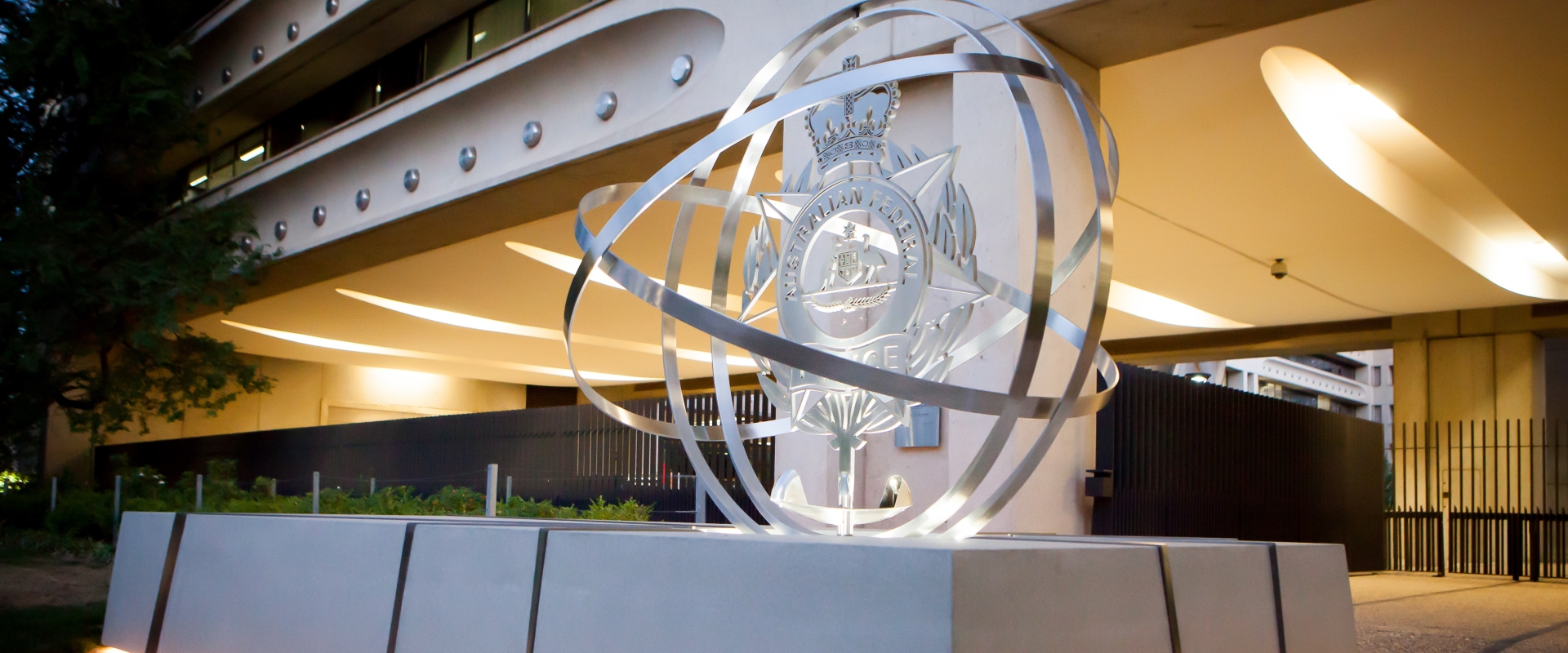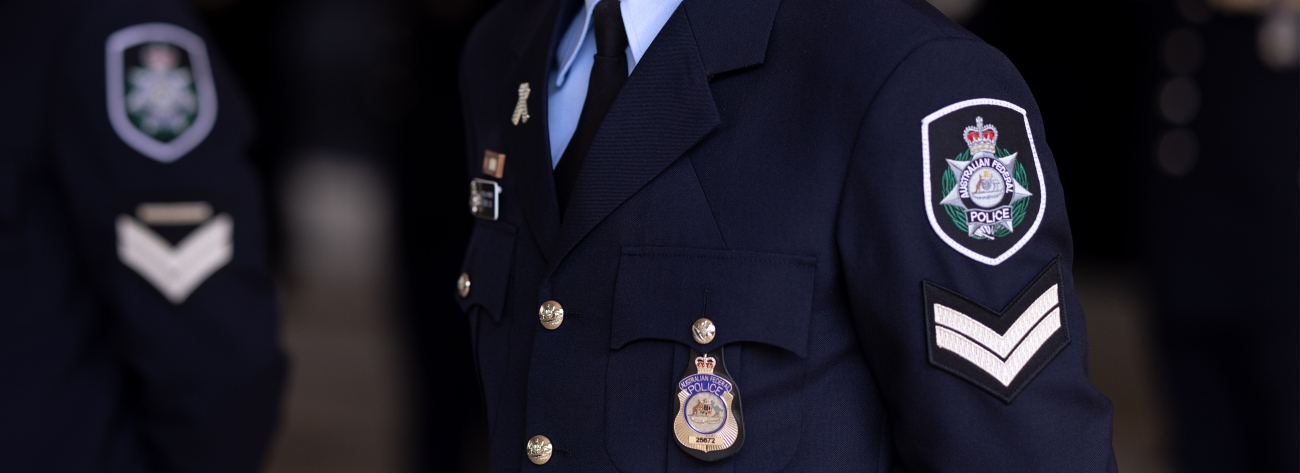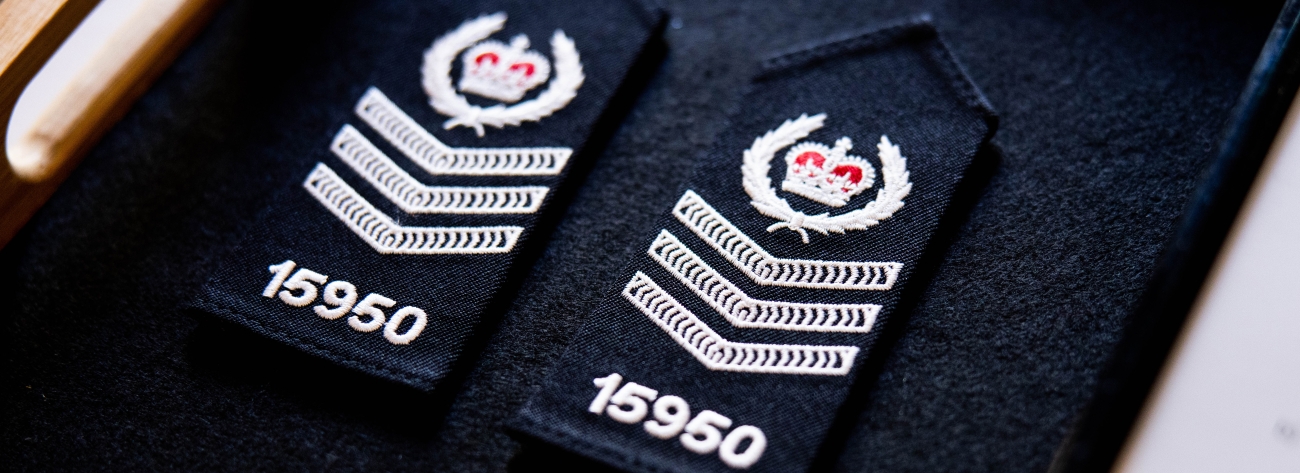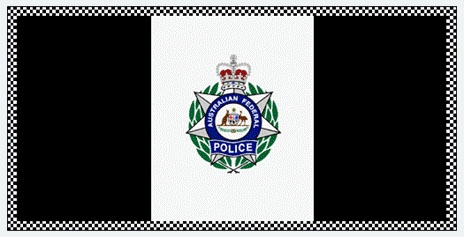Over the decades, our badges and insignia have changed to reflect the work we do.
We employee:
- sworn police officers and specialists
- sworn protective service officers
- unsworn professional staff who support the organisation.
Our sworn staff wear a uniform with badges and patches that identify their rank and role.
For example, our police officers wear a check band on their hats. And protective service officers have the words ‘Protective Service Officer’ added to their uniform.
Here's how you can identify AFP employees, buildings and vehicles.
AFP badge
The AFP badge is our main symbol. It's what identifies an AFP employee.
The Australian Federal Police Act 1979 (Cth) prohibits unlawful use of our badge.
You'll see the badge on our uniforms, buildings and vehicles. We wear a version of this badge on our hats, and it's shown on the official ID in an officer's wallet.
A more colourful AFP ceremonial badge adorns the shoulder patch of our uniforms.




